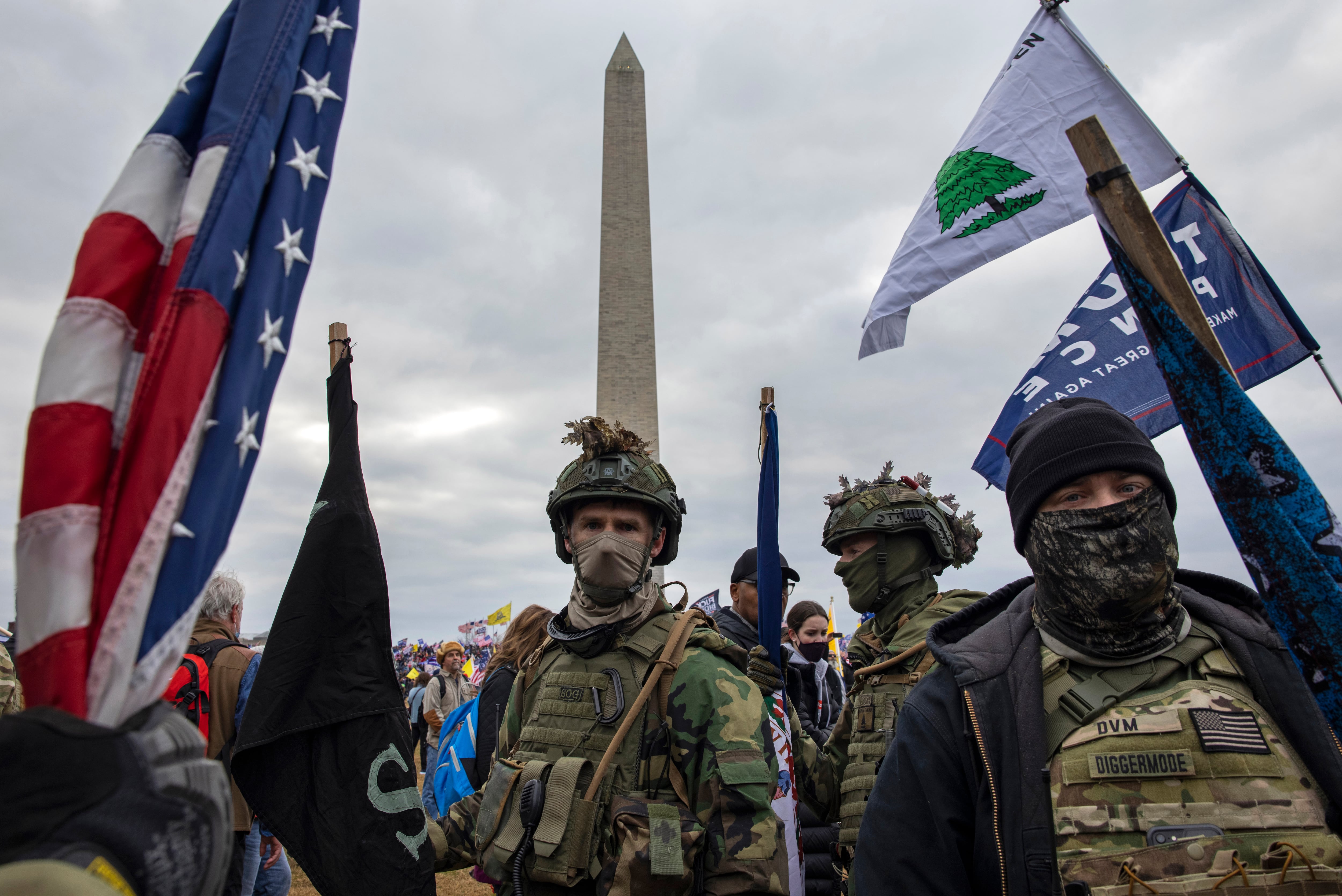Service members don’t participate in violent extremism at higher rates than the rest of the U.S. population, but former troops do — and their involvement is growing, according to research published at the end of December.
According to the report, which was commissioned by the Defense Department, anecdotal accounts of service members being involved in violent extremism create a false impression that it’s an outsized problem. Those accounts often fail to differentiate between current service members and former troops, a demographic found to participate in violent extremism at higher rates, the research states.
“[The] review found no evidence that the number of violent extremists in the military is disproportionate to the number of violent extremists in the United States as a whole,” the research says. “Extremism in the veterans’ community has peaks and valleys over recent decades, and currently appears to be on the increase.”
While the study found there were not more violent extremists in the military than in the overall population, researchers did highlight racism and sexism as ongoing problems in the Armed Forces. Moreover, researchers said that even a single incident of violent extremism carried out by a service member can lead to “significant negative repercussions” for the nation as a whole.
Because of the effect that even a small number of incidents can create, researchers urged the Pentagon to hold a zero-tolerance policy on troops’ advocacy of violent extremism and take steps to ensure “core military values prevail over fringe beliefs.”
The Pentagon approved the release of the study last week. The Defense Department first commissioned the research in 2021 to investigate extremism among the Armed Forces. Defense Secretary Lloyd Austin called for the study based on a recommendation from the Countering Extremism Working Group, which was established after the Jan. 6, 2021, attack on the Capitol.
The nonprofit Institute for Defense Analyses conducted research for the study from June 2021 to June 2022. It was approved for release after Christmas, about 18 months after the working group said it would be made available. The delay prompted anti-extremism advocacy groups and DOD watchdogs last year to question the report’s whereabouts.
At the end of the 262-page report, the Institute for Defense Analyses listed out 18 recommendations for the Pentagon. In light of the growing number of violent extremists among the veteran population, the institute called on the Defense Department to bolster the resources made available for service members as they exit the military. The Department of Veterans Affairs should also play a role, researchers said.
“For the Veterans’ community in particular, loss of military identity appears to have a strong association with difficult adjustments to civilian life that can in turn contribute to negative behaviors,” the report states.
Some service members told researchers that they were confused about the definitions and standards regarding prohibited extremist behaviors and activities. That confusion could lead to polarization and division in the ranks, researchers warned. Researchers suggested the Pentagon could present the information in a less divisive way by focusing on the military’s values, such as loyalty, respect, duty and honor, and explain how extremist activities work against those principles.
To combat division in the ranks, the Defense Department should also try to mentor and counsel service members before doling out punishments for prohibited extremist activities, researchers recommended.
Other recommendations asked that the Pentagon more uniformly flag cases of extremism, and that it add questions about prohibited extremist activities in its process for awarding security clearances. Researchers warned against any plans by the Defense Department to monitor troops’ social media activity to identify their links to extremism. Those efforts could be seen as overly intrusive and may alienate service members, the report states.
“Many of the recommendations in this report call for comprehensive cultural change that cannot be accomplished through a single action but will require a concerted effort over a period of time,” researchers wrote. “As the Department responds to such events, it should remain cognizant of the fact that violent extremism does not appear to be any more prevalent among service members than it is in American society as a whole, and avoid steps that risk unnecessary polarization or division in the ranks.”
This story was produced in partnership with Military Veterans in Journalism. Please send tips to MVJ-Tips@militarytimes.com.
Nikki Wentling is a senior editor at Military Times. She's reported on veterans and military communities for nearly a decade and has also covered technology, politics, health care and crime. Her work has earned multiple honors from the National Coalition for Homeless Veterans, the Arkansas Associated Press Managing Editors and others.




